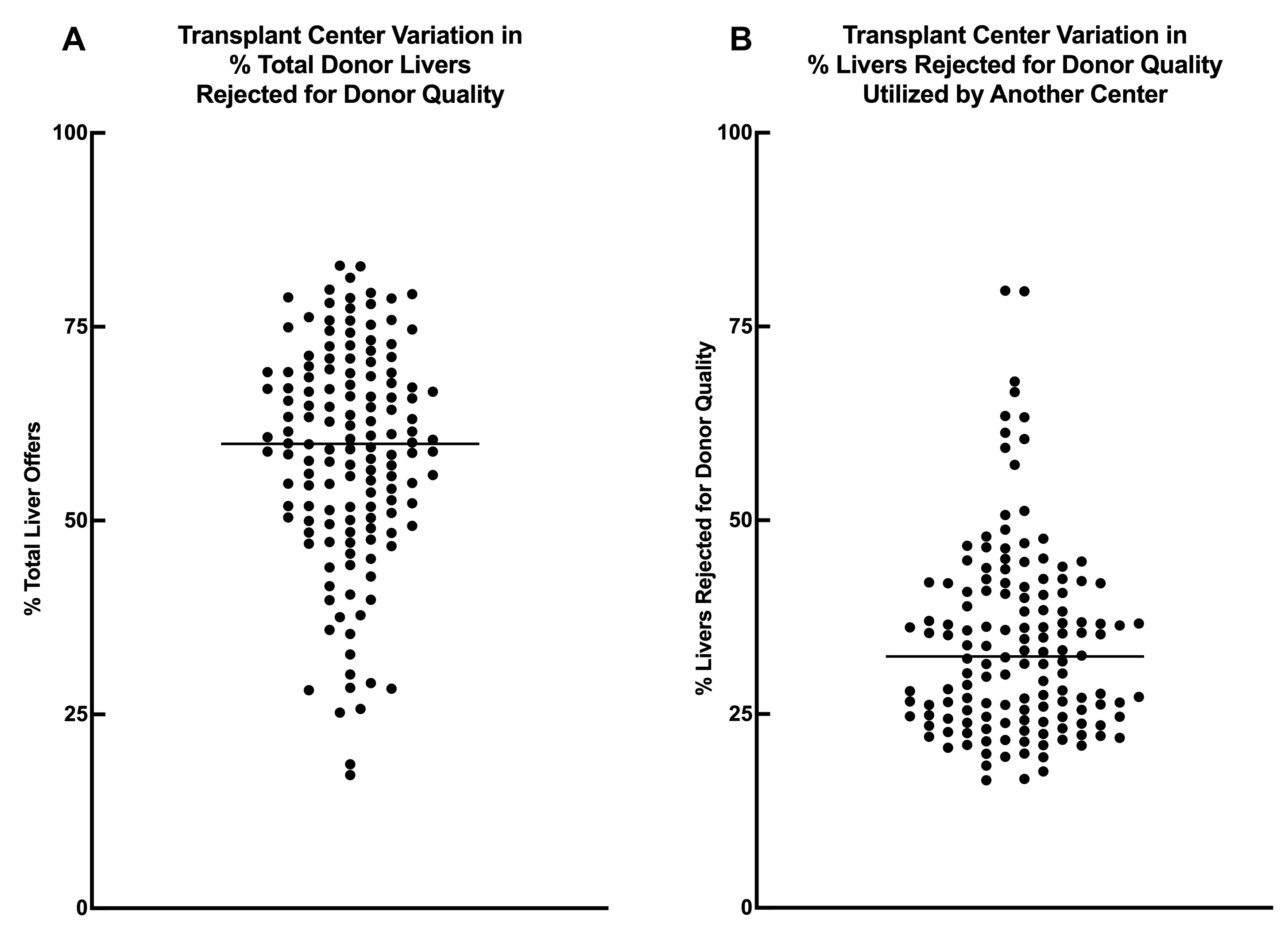Variation in Donor Liver Rejection Rates for Donor Quality Among US Transplant Centers
M. Anderson1, T. Gilbert2, M. Englesbe1, S. Waits1
1Michigan Medicine Transplant Center, Ann Arbor, MI, 2University of Michigan Medical School, Ann Arbor, MI
Meeting: 2022 American Transplant Congress
Abstract number: 892
Keywords: Donors, marginal, Liver transplantation, Organ Selection/Allocation, Outcome
Topic: Clinical Science » Liver » 59 - Liver: Expanding the Donor Pool* (Liver: MELD Allocation / Donor Issues)
Session Information
Session Name: Liver: Expanding the Donor Pool* (Liver: MELD Allocation / Donor Issues)
Session Type: Poster Abstract
Date: Saturday, June 4, 2022
Session Time: 5:30pm-7:00pm
 Presentation Time: 5:30pm-7:00pm
Presentation Time: 5:30pm-7:00pm
Location: Hynes Halls C & D
*Purpose: Optimal utilization of all viable donor livers is a public health imperative. As no standardized criteria exist for assessment of donor quality, differential utilization of available organs between transplant centers may play an important role in organ waste. We characterized variation in donor liver turn down rates for donor quality among US transplant centers.
*Methods: Using match-run data from the UNOS Potential Transplant Recipient file, we identified all deceased donor liver offers made to adult recipients in the US between January 1, 2015 – December 31, 2019. For each center, we calculated the proportion of donor livers rejected for donor quality, defined by primary refusal code 830. If a transplant center received multiple offers for the same donor liver, organ acceptance or rejection was defined by the final outcome at that center (i.e., a donor liver that was declined for one recipient, but later accepted for another recipient at the same transplant center was considered accepted). To evaluate the viability of livers rejected for donor quality at each center, we calculated the proportion of donor livers rejected for donor quality that were subsequently utilized by another transplant center.
*Results: We included data for 54,552 unique deceased donor livers offered to 144 US liver transplant centers from 2015 – 2019, of which 15,466 (28%) were discarded. The median (IQR) number of unique donor livers offered to individual transplant centers was 2720 (1503 – 4158). Overall transplant center rates of organ acceptance ranged from 1% – 31%. There was substantial variation in center-specific rates of donor liver rejection for donor quality (median 59%; range 17% to 82%, Figure 1A). Additionally, there was wide variation in the percent of donor livers rejected for donor quality at each transplant center that were subsequently utilized by another center (median 32%; range 16% to 80%, Figure 1B).
*Conclusions: Rates of donor liver rejection for donor quality were high and varied substantially by transplant center. While some rejected livers may indeed be unsuitable for transplantation, at many centers over 50% of livers rejected for donor quality were subsequently utilized by another center, suggesting that many of these grafts are viable. Center specific quality measures of organ utilization may optimize patient outcomes and reduce organ discard in the US.
To cite this abstract in AMA style:
Anderson M, Gilbert T, Englesbe M, Waits S. Variation in Donor Liver Rejection Rates for Donor Quality Among US Transplant Centers [abstract]. Am J Transplant. 2022; 22 (suppl 3). https://atcmeetingabstracts.com/abstract/variation-in-donor-liver-rejection-rates-for-donor-quality-among-us-transplant-centers/. Accessed January 3, 2026.« Back to 2022 American Transplant Congress

